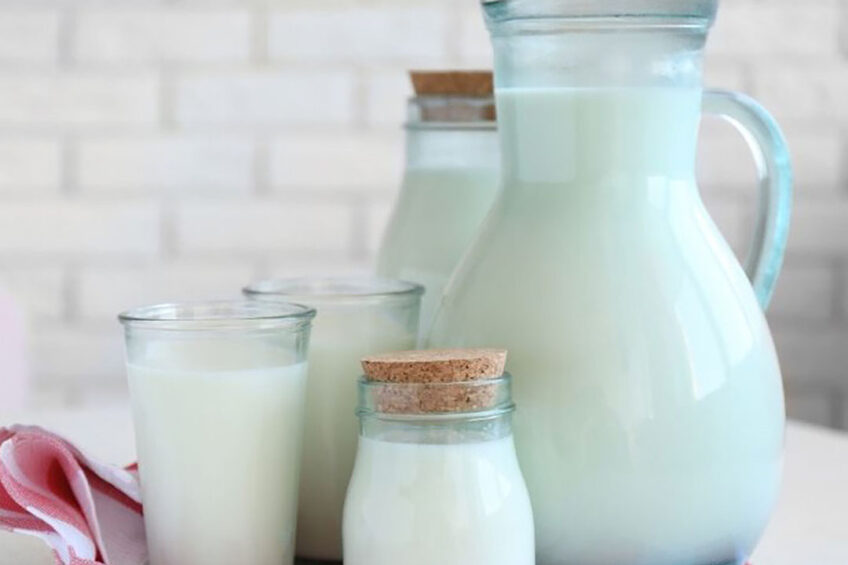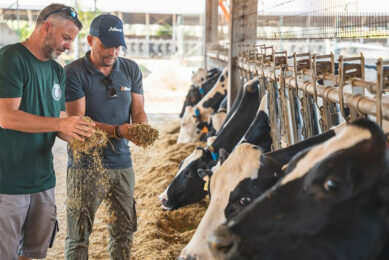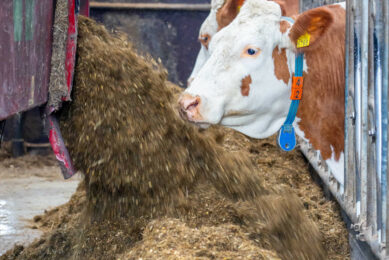UK dairy: Marginal gains and efficiencies to boost bottom line

Milk producers have succeeded in boosting health, fertility and margins by focusing on marginal gains and efficiencies, according to the latest Kingshay Dairy Costings Focus report.
Its annual review found producers had improved herd health while cases of mastitis, lameness and other diseases had all declined.
In the last 5 years, cases of lameness and mastitis have fallen from 43 and 41 cases per cow to 35 and 30 cases per cow. Downward trends can be attributed to mobility scoring and improved foot management. Stringent culling protocols have helped reduce both lameness and mastitis cases.
Health directly impacts fertility, and Kingshay believes the data sets demonstrate the correlation between improved health and fertility gains. Metritis is an important cause of fertility, with infertility being the top reason for culling at 25%. But compared with last year, cases of metritis have fallen by 18.8%.
Calving intervals rolled back by 4 days to 393 days and services per conception also improved to 2.3 services per conception. While there was no change to conception rate (38%) and culling for infertility (6.7%), there was an improvement in both the 100-day in-calf rate and the 200-day, not in-calf rate, the latter falling sharply from 16% to 13%.
Further gains
Economically, higher cull values and enhanced efficiencies have seen the cost of infertility drop by 9.6% to £1.87 p/litre. Kathryn Rowland, senior farm services manager at Kingshay, said that while producers had made great strides, further gains could be achieved.
The average cost of all health issues was £29,068 – a staggering increase of 28% on last year’s average. Estimated costs per case have all increased on last year – mastitis and lameness going up £90 and £109, respectively.
And there is still a huge gap between the top quartile of producers and the average – worth some £13,482 in health costs alone. There are also the hidden costs of poor health, such as reduced milk yields and dumped milk due to medicine withdrawal.
When it comes to production and financial performance, producers have succeeded in boosting margins. However, these gains are quickly being eaten into by soaring overheads and input costs, meaning producers’ margins are still under pressure.
Covid, Brexit and war
“The past year has been one of the most volatile in memory. Covid, a delayed Brexit impact and the devasting invasion of Ukraine have caused record feed, fuel and fertiliser costs,” said Rowland.
Ammonium nitrate (AN) prices rocketed from £228/t to £839/t between January 2021 and March 2022. Fuel prices have seen similar trends with red diesel up from 60p/litre to 96p/litre between March 2021 and this March. And concentrate levels have risen on last year by 23.8% to £296/t and over a 10-year rolling trend the average cost has risen from £223/t to £274/t.
Milk prices have soared by 24% to 36.79p/litre in March. Spot prices now drive the market and the gap between the top and bottom 10% of milk prices has risen to 10.2ppl. With prices changing rapidly, these figures are fast becoming out of date, with more price increases announced for August, said Kingshay.
Looking at production levels, based on actual figures from herds using Kingshay’s dairy costings service across the UK, milk yields have dipped slightly on last year’s highs, from 8,512 litres per cow to 8,456 litres. Milk from forage dropping back to 2,801 litres per cow may be linked to forage quality and cows not performing as expected.
“Surprisingly, milk from grazing was the lowest it has been in the past 3 years,” said Rowland.
When comparing feed production systems, all had an encouraging lift in margin over purchased feed (MOPF) on both a per cow and per litre basis. On average, MOPF increased from 20.16p/litre and £1,716/cow last year to 22.71p/litre and £1,920/cow this year – ending March 2022.
Average MOPF per litre had organic herds coming out on top at 29.94p/litre for the low/moderate yielders – although within organic systems, MOPF variation has widened to £117,252. Comparing MOPF on a per cow basis saw all-year-round calving with a housing focus taken the top spot at £2,127.
Organic
Organic herds made good use of grazing to help cut reliance on purchased feed, although feed costs were still up 7.1% on last year at 10.88ppl. Yields fell back by 4.6% to 6,646 litres but was still the third-highest seen in the past 2 decades.
Cross-bred
Higher milk prices helped boost margins for cross-bred herds. There was a slight decline in yield, from 6,856 litres/cow to 6,749 litres but there was little change in concentrate use. The major difference was in total feed costs, increasing by 14.8% to 7.68p/litre.
Channel Islands
Similarly, Channel Island herds experienced yield drops from 6,091 litres per cow to 5,867 litres, with total feed cost rising by 16.6% on last year to 10.91ppl. However, butterfat and protein content increased from 5.41% and 3.88% to 5.44% and 3.9%, respectively.
High milk prices and costs offer tremendous opportunities for small improvements to have a big impact, said Rowland: “It is important to know your cost of production and to focus on efficiencies to maximise potential income – marginal gains add up and bolster the bottom line,” added Rowland.
The report can be found here.
Join 13,000+ subscribers
Subscribe to our newsletter to stay updated about all the need-to-know content in the dairy sector, two times a week.










